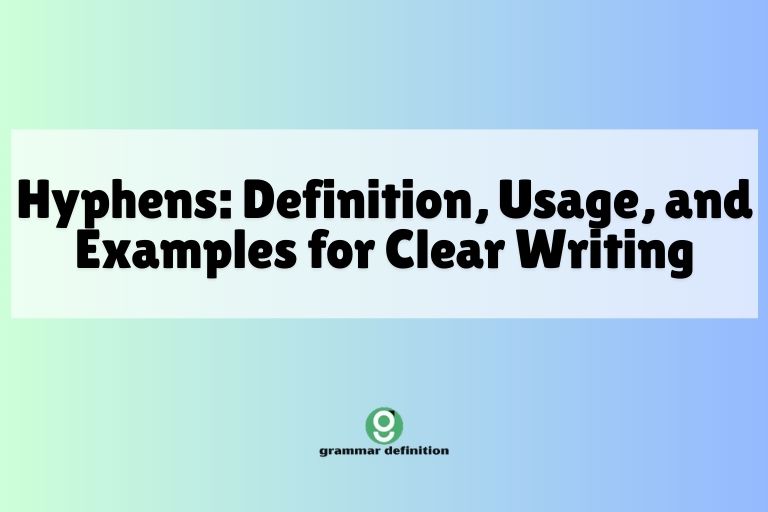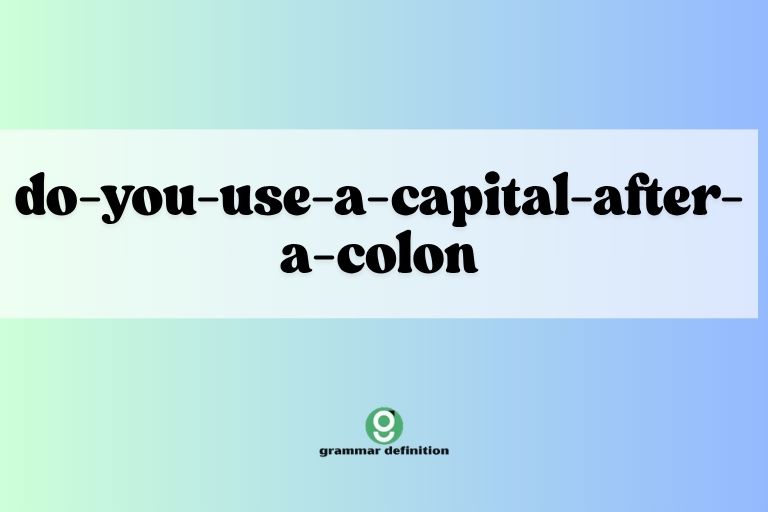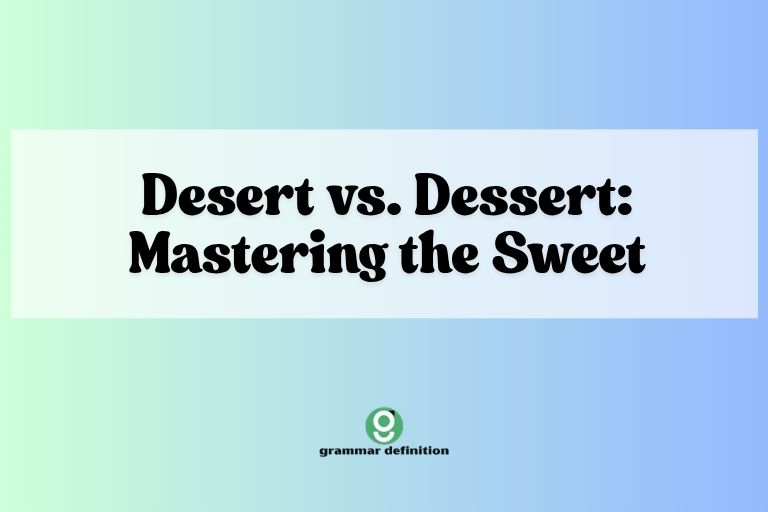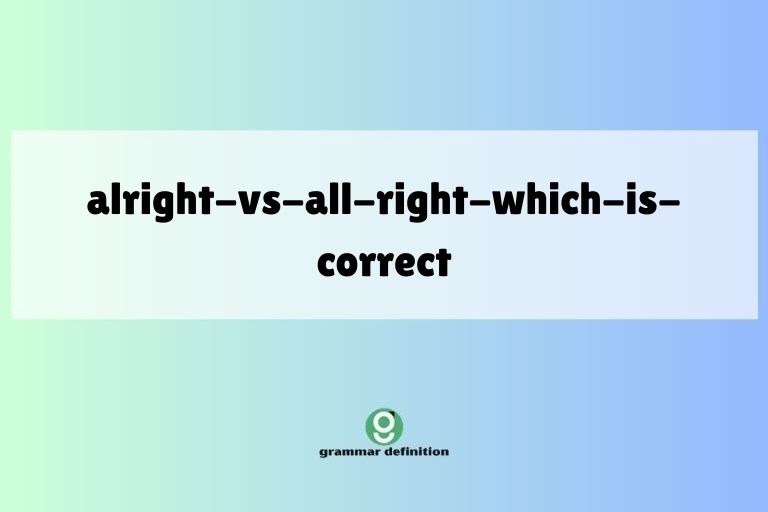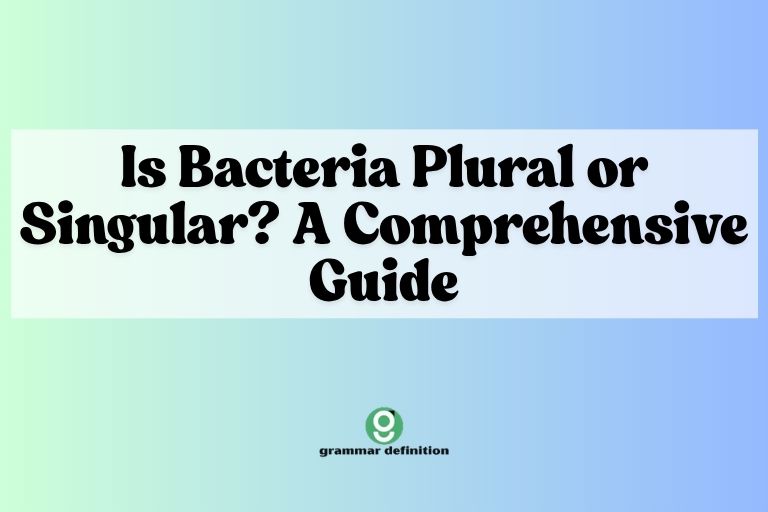Understanding Prepositions: Definition, Usage, and Examples
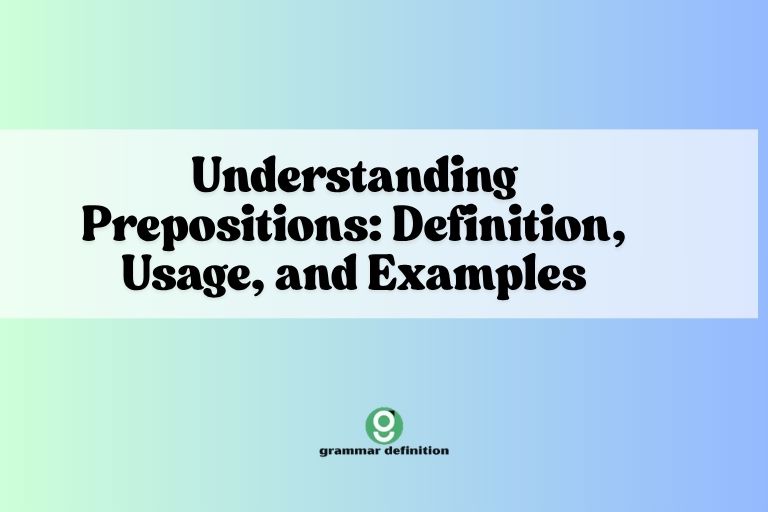
Prepositions are essential components of the English language that connect nouns, pronouns, and phrases to other words in a sentence. Mastering prepositions is crucial for clear and effective communication.
They indicate relationships such as location, time, direction, and manner. This comprehensive guide aims to provide a thorough understanding of prepositions, their types, usage rules, and common mistakes.
Whether you are a beginner or an advanced learner, this article will help you enhance your grasp of prepositions and improve your overall English proficiency.
Table of Contents
- Introduction
- Definition of Prepositions
- Structural Breakdown of Prepositions
- Types of Prepositions
- Examples of Prepositions
- Usage Rules of Prepositions
- Common Mistakes with Prepositions
- Practice Exercises
- Advanced Topics in Prepositions
- Frequently Asked Questions (FAQ)
- Conclusion
Definition of Prepositions
A preposition is a word that connects a noun, pronoun, or noun phrase to other words in a sentence. It typically indicates the temporal, spatial, or logical relationship of its object to the rest of the sentence. The word or phrase that the preposition introduces is called the object of the preposition. Prepositions are crucial for establishing context and clarity in English.
Prepositions can be classified based on their form and function. In terms of form, they can be simple (e.g., in, on, at), compound (e.g., into, onto, upon), or phrasal (e.g., in spite of, according to). Functionally, they can indicate time (e.g., before, after, during), place (e.g., above, below, beside), direction (e.g., to, from, towards), and other relationships.
Structural Breakdown of Prepositions
The basic structure involving a preposition is: Preposition + Object of the Preposition. The object is usually a noun, pronoun, or noun phrase. The entire phrase, including the preposition and its object, is called a prepositional phrase. Prepositional phrases can function as adjectives or adverbs, modifying other words in the sentence.
For example, in the sentence “The book is on the table,” the preposition is “on,” and the object of the preposition is “the table.” The entire phrase “on the table” is a prepositional phrase that functions as an adverb, modifying the verb “is” by indicating the location of the book.
Understanding the structure helps in correctly identifying and using prepositions. It also aids in avoiding common errors such as ending a sentence with a preposition (although this rule is often relaxed in modern English) or misplacing the preposition, which can lead to ambiguity.
Types of Prepositions
Prepositions can be categorized into several types based on their structure. The main types are simple prepositions, compound prepositions, phrase prepositions, and participle prepositions.
Each type has its unique characteristics and usage.
Simple Prepositions
Simple prepositions are single-word prepositions. These are the most common and basic prepositions in English. They include words like in, on, at, to, from, by, for, of, up, down, over, and under. These prepositions can express a variety of relationships, including time, place, and direction.
For instance, “The cat is on the mat” uses the simple preposition “on” to indicate the cat’s location. Similarly, “I will see you at 5 PM” uses “at” to specify a time. Simple prepositions are fundamental to constructing clear and concise sentences.
Compound Prepositions
Compound prepositions are formed by combining a simple preposition with another word, often a noun, adjective, or adverb. These prepositions usually consist of two or more words but function as a single preposition. Examples include into, onto, upon, within, without, beneath, beside, between, among, and across.
For example, “She walked into the room” uses the compound preposition “into” to indicate direction. “The house is beside the river” uses “beside” to indicate location. Compound prepositions often provide more specific or nuanced meanings than simple prepositions.
Phrase Prepositions
Phrase prepositions, also known as complex prepositions, are groups of words that function as a single preposition. These phrases typically include a simple preposition combined with other words, such as nouns, adjectives, or adverbs. Common examples include in front of, in spite of, on account of, according to, because of, due to, by means of, in addition to, and with regard to.
For example, “In spite of the rain, we went for a walk” uses the phrase preposition “in spite of” to express contrast. “According to the news, there will be a storm tomorrow” uses “according to” to indicate the source of information. Phrase prepositions often add complexity and precision to sentences.
Participle Prepositions
Participle prepositions are words that originate from participles (verb forms ending in -ing or -ed) but function as prepositions. These words often indicate a state, condition, or relationship. Common examples include considering, regarding, including, excluding, concerning, assuming, given, and pending.
For example, “Considering the circumstances, he did a good job” uses the participle preposition “considering” to introduce a condition. “Regarding your question, I will answer it later” uses “regarding” to indicate the topic of discussion. Participle prepositions can add a formal or nuanced tone to sentences.
Examples of Prepositions
Prepositions are used in various contexts to indicate different relationships. Understanding these relationships is key to using prepositions correctly.
The following sections provide examples of prepositions used to indicate time, place, direction, agent, and instrument.
Prepositions of Time
Prepositions of time indicate when something happens. Common prepositions of time include at, on, in, before, after, during, until, since, for, and by. The choice of preposition depends on the specific time frame being referenced.
For example, “I will meet you at 3 PM” uses “at” to specify a precise time. “I will see you on Monday” uses “on” to specify a day of the week. “I was born in 1990″ uses “in” to specify a year. The following table provides more examples.
| Preposition | Example Sentences |
|---|---|
| At | I have a meeting at 9 AM. The concert starts at 7 PM. We arrived at the same time. |
| On | I will visit you on Tuesday. The event is on July 4th. She was born on a rainy day. |
| In | He was born in 1985. The class starts in the morning. We will go there in the summer. |
| Before | Please arrive before 8 AM. He finished the work before the deadline. I need to leave before the movie starts. |
| After | We will have dinner after the meeting. She arrived after everyone else. They went home after the party. |
| During | He slept during the movie. She studied during the summer. They talked during the break. |
| Until | I will wait here until you come back. He worked until midnight. The store is open until 9 PM. |
| Since | I have been working here since 2010. She has been studying since last year. They have been friends since childhood. |
| For | I have been waiting for two hours. She studied for five years. They lived there for ten years. |
| By | The project is due by Friday. He finished the report by the end of the day. They will arrive by tomorrow. |
| From | The store is open from 9 AM to 5 PM. The class is from Monday to Friday. He works from home. |
| Within | Please submit your application within a week. The package will arrive within three days. We need to finish the project within a month. |
| Throughout | It rained throughout the day. She traveled throughout Europe. He studied throughout the night. |
| Past | It’s past midnight. We drove past the town. She walked past the library. |
| Around | I’ll see you around lunchtime. The meeting is around 3 PM. We arrived around the same time. |
| Over | I’ll be there over the weekend. He studied over the summer. They visited over the holidays. |
| Between | The meeting is scheduled between 2 PM and 4 PM. The package will arrive between Monday and Wednesday. He works between two jobs. |
| By the time | By the time I arrived, the movie had already started. By the time she finished, everyone had left. By the time we got there, the store was closed. |
| During the course of | During the course of the investigation, they found new evidence. During the course of the project, we faced several challenges. During the course of the year, he traveled extensively. |
| In the meantime | I’ll prepare dinner in the meantime. She’ll finish her work in the meantime. They’ll set up the room in the meantime. |
Prepositions of Place
Prepositions of place indicate the location or position of something. Common prepositions of place include at, on, in, above, below, under, beside, between, among, near, behind, in front of, and opposite. The choice of preposition depends on the specific spatial relationship being described.
For example, “The book is on the table” uses “on” to indicate that the book is on the surface of the table. “The cat is under the chair” uses “under” to indicate that the cat is beneath the chair. “I live in New York” uses “in” to specify a city. The following table provides more examples.
| Preposition | Example Sentences |
|---|---|
| At | I am at the library. She is at the office. They are at the park. |
| On | The book is on the table. The picture is on the wall. The cat is on the roof. |
| In | I live in London. The pen is in the drawer. The fish is in the tank. |
| Above | The picture is above the fireplace. The plane flew above the clouds. The temperature is above average. |
| Below | The temperature is below freezing. The fish swam below the surface. The apartment is below ours. |
| Under | The cat is under the chair. The ball is under the bed. There is a tunnel under the river. |
| Beside | She sat beside me. The house is beside the lake. He stood beside the car. |
| Between | The house is between the trees. There is a path between the buildings. The negotiations are between the two countries. |
| Among | She is among her friends. The book is among the papers. He is among the crowd. |
| Near | The park is near my house. The school is near the station. The hospital is near the airport. |
| Behind | The car is behind the truck. The garden is behind the house. He is standing behind me. |
| In front of | The car is in front of the house. She stood in front of the stage. The store is in front of the park. |
| Opposite | The bank is opposite the library. They live opposite each other. The store is opposite the school. |
| Across from | The cafe is across from the museum. We live across from the park. The bank is across from the post office. |
| Around | He walked around the park. The kids played around the tree. We drove around the city. |
| Over | The plane flew over the city. He jumped over the fence. She put a blanket over the baby. |
| Through | We walked through the forest. The train went through the tunnel. The light shone through the window. |
| Along | We walked along the beach. The houses are along the river. The trees are along the road. |
| Inside | The cat is inside the house. The letter is inside the envelope. The food is inside the refrigerator. |
| Outside | The car is outside the garage. The children are playing outside. The flowers are outside the window. |
Prepositions of Direction
Prepositions of direction indicate movement from one place to another. Common prepositions of direction include to, from, towards, into, onto, through, across, up, and down. The choice of preposition depends on the specific path or destination being described.
For example, “I am going to the store” uses “to” to indicate the destination. “He came from London” uses “from” to indicate the origin. “She walked towards the park” uses “towards” to indicate the direction. The following table provides more examples.
| Preposition | Example Sentences |
|---|---|
| To | I am going to the store. She is traveling to Paris. He walked to the school. |
| From | He came from London. She returned from vacation. They drove from New York. |
| Towards | She walked towards the park. He ran towards the finish line. They drove towards the mountains. |
| Into | She walked into the room. He jumped into the pool. They drove into the garage. |
| Onto | The cat jumped onto the table. He climbed onto the roof. They loaded the boxes onto the truck. |
| Through | We walked through the forest. The train went through the tunnel. The light shone through the window. |
| Across | He swam across the river. She walked across the street. They drove across the country. |
| Up | He climbed up the hill. She walked up the stairs. They drove up the mountain. |
| Down | He walked down the hill. She ran down the stairs. They drove down the mountain. |
| Around | We drove around the city. He walked around the park. The kids played around the tree. |
| Over | The plane flew over the city. He jumped over the fence. She put a blanket over the baby. |
| Past | We drove past the town. She walked past the library. He ran past the school. |
| Along | We walked along the beach. The houses are along the river. The trees are along the road. |
| Out of | He came out of the house. She took the book out of the bag. They went out of the room. |
| Away from | He walked away from the crowd. She moved away from the noise. They drove away from the city. |
| Off | He fell off the ladder. She took the picture off the wall. They drove off the road. |
| Toward | They ran toward the sound. She walked toward the light. He moved toward the door. |
| To the left of | The bank is to the left of the school. The house is to the left of the park. The store is to the left of the library. |
| To the right of | The library is to the right of the bank. The park is to the right of the house. The school is to the right of the store. |
| In the direction of | They walked in the direction of the beach. He drove in the direction of the mountains. She ran in the direction of the park. |
Prepositions of Agent
Prepositions of agent indicate who or what performs an action. The most common preposition of agent is by. It is used to show who or what is responsible for a particular action.
For example, “The book was written by John” uses “by” to indicate that John is the author of the book. “The cake was made by my mother” uses “by” to indicate that the mother made the cake. The following table provides more examples.
| Preposition | Example Sentences |
|---|---|
| By | The book was written by Shakespeare. The picture was painted by Van Gogh. The song was sung by Adele. |
| Through | The message was delivered through a friend. The news spread through social media. The product was sold through online channels. |
Prepositions of Instrument
Prepositions of instrument indicate the tool or means by which something is done. The most common prepositions of instrument are with and by. “With” is used to indicate a tool or object, while “by” can sometimes indicate a method or process.
For example, “I wrote the letter with a pen” uses “with” to indicate that a pen was used to write the letter. “He opened the door with a key” uses “with” to indicate that a key was used to open the door. The following table provides more examples.
| Preposition | Example Sentences |
|---|---|
| With | I wrote the letter with a pen. He opened the door with a key. She cut the cake with a knife. |
| By | He traveled by train. She contacted me by email. They communicated by phone. |
Usage Rules of Prepositions
Using prepositions correctly involves understanding several rules and guidelines. These rules cover various aspects, including the placement of prepositions, the choice of prepositions for specific contexts, and common exceptions.
Here are some key usage rules:
- Placement: Prepositions usually precede their objects. However, in some cases, such as questions or relative clauses, the preposition may come at the end of the sentence or clause. For example, “Who are you talking to?”
- Specific Contexts: Certain prepositions are commonly used with specific nouns, verbs, or adjectives. These combinations are often idiomatic and must be learned through exposure and practice. For example, “depend on,” “interested in,” “agree with.”
- Avoiding Dangling Prepositions: While it was once considered grammatically incorrect to end a sentence with a preposition, modern English often allows it, especially in informal contexts. However, it is generally best to avoid dangling prepositions if it makes the sentence unclear or awkward. For example, instead of “What are you looking at?” consider “At what are you looking?” (though this is very formal).
- Prepositions and Gerunds: When a verb follows a preposition, it should be in the gerund form (-ing). For example, “I am good at playing the piano.”
- Consistency: Ensure consistency in preposition usage throughout a sentence or paragraph. If you use a certain preposition in one part of a sentence, maintain that usage in parallel constructions.
Understanding these rules will help you use prepositions accurately and effectively in your writing and speech. Practice and attention to detail are key to mastering preposition usage.
Common Mistakes with Prepositions
Prepositions can be tricky, and even advanced learners make mistakes. Here are some common errors to watch out for:
- Incorrect Preposition Choice: Using the wrong preposition for a particular context. For example, saying “I am interested on this topic” instead of “I am interested in this topic.”
- Dangling Prepositions: Unnecessarily ending a sentence with a preposition when it creates awkwardness or ambiguity. For example, “Where is the book at?” can be improved to “Where is the book?”
- Omission of Prepositions: Leaving out a necessary preposition. For example, saying “I arrived 9 AM” instead of “I arrived at 9 AM.”
- Redundant Prepositions: Using unnecessary prepositions. For example, saying “I will meet you at 3 PM in the afternoon” when “I will meet you at 3 PM” is sufficient.
- Misuse of “In” vs. “On” vs. “At”: Confusing the usage of these common prepositions for time and place. Remember that “at” is used for specific times and places, “on” is used for days and surfaces, and “in” is used for enclosed spaces and longer time periods.
Here are some examples of correct and incorrect usage:
| Incorrect | Correct | Explanation |
|---|---|---|
| I am good on math. | I am good at math. | “At” is the correct preposition to use with “good” in this context. |
| Where are you going to? | Where are you going? | The preposition “to” is redundant here. |
| I depend of my parents. | I depend on my parents. | “On” is the correct preposition to use with “depend.” |
| See you on Monday at the morning. | See you on Monday morning. | “On” is correct for days. “In” is correct for parts of the day (in the morning, in the afternoon, in the evening) but it’s often ommited when the day is mentioned. |
| The book is in the table. | The book is on the table. | “On” is used for surfaces. |
| I live at New York. | I live in New York. | “In” is used for cities and countries. |
| He arrived in 6 PM. | He arrived at 6 PM. | “At” is used for specific times. |
| She is afraid from spiders. | She is afraid of spiders. | “Of” is the correct preposition to use with “afraid.” |
| I agree to you. | I agree with you. | “With” is the correct preposition to use with “agree” when referring to a person. |
| The cat jumped off of the roof. | The cat jumped off the roof. | “Off of” is redundant; “off” is sufficient. |
By being aware of these common mistakes, you can improve your accuracy and confidence in using prepositions.
Practice Exercises
Test your knowledge of prepositions with these practice exercises. Choose the correct preposition to complete each sentence.
Exercise 1: Fill in the blanks with the correct preposition (in, on, at).
| Question | Answer |
|---|---|
| 1. I will meet you ______ the library. | at |
| 2. The book is ______ the table. | on |
| 3. She lives ______ London. | in |
| 4. The meeting is ______ 3 PM. | at |
| 5. We will go there ______ Monday. | on |
| 6. He was born ______ 1995. | in |
| 7. The concert is ______ July 4th. | on |
| 8. I saw him ______ the park. | in |
| 9. The store is ______ the corner. | on |
| 10. The cat is sleeping ______ the bed. | on |
Exercise 2: Choose the correct preposition (to, from, with, by).
| Question | Answer |
|---|---|
| 1. I am going ______ the store. | to |
| 2. He came ______ Paris. | from |
| 3. She wrote the letter ______ a pen. | with |
| 4. The book was written ______ John. | by |
| 5. They traveled ______ train. | by |
| 6. We walked ______ the park. | through |
| 7. She is talking ______ her friend. | to |
| 8. He opened the door ______ a key. | with |
| 9. The cake was made ______ my mother. | by |
| 10. I learned English ______ practice. | by |
Exercise 3: Fill in the blanks with the most appropriate preposition.
| Question | Answer |
|---|---|
| 1. She is interested ______ learning new languages. | in |
| 2. He is afraid ______ spiders. | of |
| 3. I agree ______ you. | with |
| 4. The cat jumped ______ the roof. | off |
| 5. We depend ______ our parents. | on |
| 6. The meeting is ______ Monday morning. | on |
| 7. The picture is ______ the wall. | on |
| 8. He lives ______ a small town. | in |
| 9. She is good ______ playing the piano. | at |
| 10. They are arriving ______ 5 PM. | at |
Advanced Topics in Prepositions
For advanced learners, understanding more complex aspects of prepositions can further enhance their language skills. These topics include:
- Prepositional Verbs: These are verbs that are always followed by a specific preposition. The preposition changes the meaning of the verb. Examples include “look after” (take care of), “break into” (enter illegally), and “get along with” (have a good relationship with).
- Prepositional Idioms: These are idiomatic expressions that include prepositions. The meaning of the idiom is not always obvious from the individual words. Examples include “kick the bucket” (die), “under the weather” (sick), and “in the same boat” (in the same situation).
- Formal vs. Informal Usage: The use of prepositions can vary depending on the context and the level of formality. In formal writing, it is generally best to avoid ending sentences with prepositions. However, in informal speech and writing, this rule is often relaxed.
- Prepositional Phrases as Adjectives or Adverbs: Understanding how prepositional phrases function as modifiers can improve sentence structure and clarity. For example, “The book on the table is mine” (adjective) vs. “He walked to the store” (adverb).
By exploring these advanced topics, learners can gain a deeper understanding of prepositions and their role in the English language.
Frequently Asked Questions (FAQ)
Here are some frequently asked questions about prepositions:
- What is the difference between “in,” “on,” and “at” for time?
Answer: “In” is used for general time periods like months, years, centuries, and parts of the day (e.g., in the morning, in the 21st century). “On” is used for specific days and dates (e.g., on Monday, on July 4th). “At” is used for specific times, points in time, and holidays without “day” (e.g., at 3 PM, at night, at Christmas).
- Is it always wrong to end a sentence with a preposition?
Answer: While traditional grammar rules discouraged ending sentences with prepositions, modern English often allows it, especially in informal contexts. However, it’s best to avoid it if it makes the sentence sound awkward or unclear. For example, “Who are you talking to?” is acceptable, but “Where did you get this from?” could be rephrased as “From where did you get this?” (though the latter is very formal).
- How can I improve my preposition usage?
Answer: The best way to improve your preposition usage is through consistent exposure to the English language. Read widely, listen to native speakers, and pay attention to how prepositions are used in different contexts. Practice exercises and seek feedback on your writing to identify and correct errors.
- Are there any resources for learning more about prepositions?
Answer: Yes, there are many resources available, including grammar textbooks, online grammar guides, language learning websites, and apps. Additionally, reading authentic English texts and paying attention to preposition usage can be very helpful.
- What are some common prepositional phrases?
Answer: Some common prepositional phrases include: in front of, in spite of, on account of, according to, because of, due to, by means of, in addition to, with regard to, at the top of, and in the middle of. These phrases function as single units and add detail and nuance to sentences.
Conclusion
Prepositions are vital for constructing clear, precise, and meaningful sentences in English. By understanding the different types of prepositions, their usage rules, and common mistakes, learners can significantly improve their language skills.
Consistent practice, exposure to authentic English, and attention to detail are key to mastering prepositions. Whether you are a beginner or an advanced learner, a solid grasp of prepositions will enhance your ability to communicate effectively and confidently in English.

